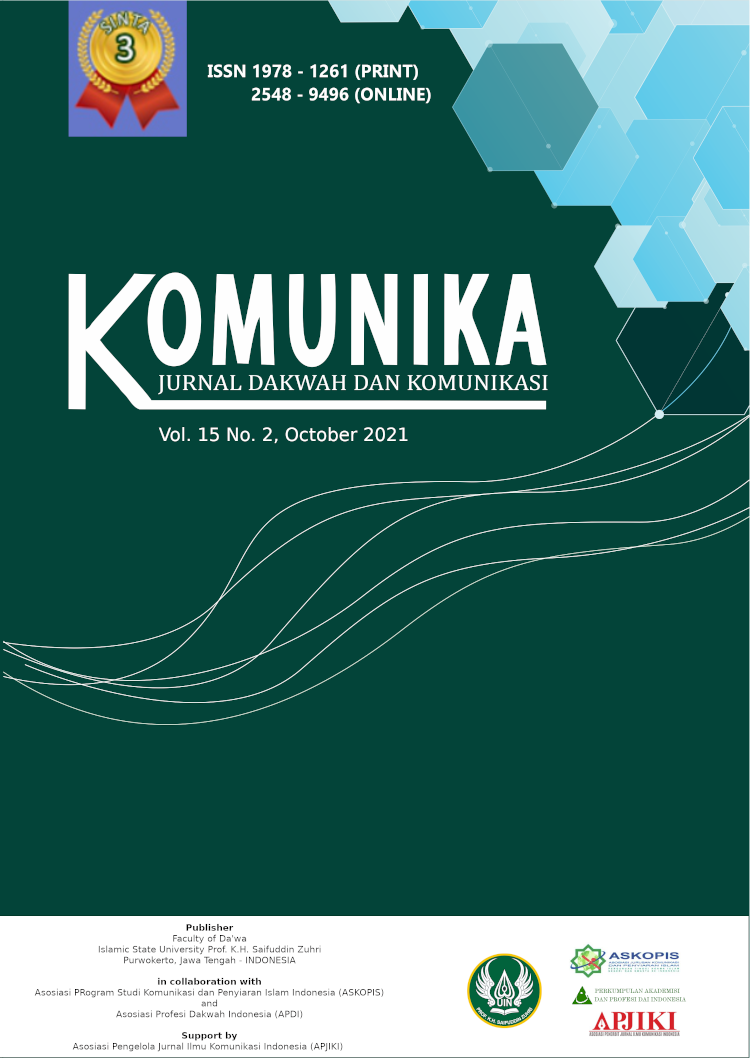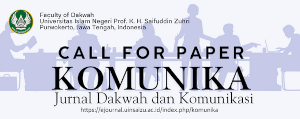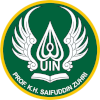People with Disabilities as Motivational Objects in the Kick Andy Talkshow Program: The Social Construction Approach of Reality Theory
DOI:
https://doi.org/10.24090/komunika.v15i2.4574Keywords:
Disabilities, Kick Andy, Television Show, Social ConstructionAbstract
Most of the disability issues have not yet received proper representation in the media, even though quite a few people with disabilities in Indonesia. The depiction of persons with disabilities in the media often distorts them. Often people with disabilities with physical limitations are depicted incorrectly or even irrationally. The Social Construction of Reality (SCR) theory, introduced by Peter L. Berger and Thomas Luckmann, uses to analyze whether the Kick Andy television program supports the stigma of the disabled or can be a medium that changes the stigma that exists as constructs for the disabled-related community. Television viewers have a rationalistic cycle through three moments: externalization, objectivation, and internalization. This theory focuses on general meanings and constructions built by community groups to shape social order (rules, standards, values, and activities recognized in community groups). The study results show that guest stars with disabilities on the Kick Andy television program cannot separate from the social construction that has been formed in the community regarding their condition. The Kick Andy program also clarifies the social construction experienced by its guest stars, which uses as an object of motivation for the audience. The researcher found that the Kick Andy show, intentionally or unintentionally, still gave a lousy label to people with disabilities, even though the host then used the narration built as a background for inspiration.Downloads
Download data is not yet available.
References
Aini, Hanifah Risti. (2020). Citra Perempuan Difabel di Media: Sebuah Analisis Wacana Kritis. AL-IDZA'AH Jurnal Dakwah dan Komunikasi, 2(2), 12-35.
Apny, Nadine Alvira dan Nurul Hasfi. (2019). Framing Pemberitaan Isu Disabilitas Dalam Media Online Suaramerdeka.com. Interaksi Online, 8(1), 99-110.
Barnes, C. (1992). Disabling Imagery and the Media: An Exploration of the Principles for Media Representations of Disabled People. S.l.: BCODP.
Berger, Peter L. & Thomas Luckmann. (2013). Tafsir Sosial atas Kenyataan: Risalah tentang Sosiologi Pengetahuan. Jakarta: LP3E.
Creswell, John .W. (2009). Research Design: Pendekatan Kualitatif, Kuantitatif, dan Mixed. Yogyakarta: Pustaka Pelajar.
Firmansyah, Dwi. (2020). Konvergesi Media Grup EMTEK dalam Pemberitaan Disabilitas. Perspektif Komunikasi: Jurnal Ilmu Komunikasi Politik dan Komunikasi Bisnis, 4(1), 61-72.
Fursich, E. (2010). Media and the representation of Others. International Social Science Journal, 61(199), 113-130.
Halimatusadiah. (2017). Dari Prasangka Hingga Diskriminasi: Menyoal Stigma Sesat dan Kekerasan Terhadap Ahmadiyah dalam Prespektif Komunikasi. Jurnal Avant Garde, 5(1), 15-34.
Haller, B.A. (2010). Representing Disability in an Ableist World. Louisville: The Avocado Press.
Internastional Labour Organization (ILO). (2014). Panduan Peliputan Disabilitas Di Indonesia. Jakarta : ILO.
Kementerian Sosial Republik Indonesia. (26 Oktober 2020). Kemensos Dorong Aksesibilitas Informasi Ramah Penyandang Disabilitas. Retrieved Oktober 3, 2021, from Data Mining Website: https://kemensos.go.id/
Littlejohn, Stephen W., Foss, Karen A. (2009). Theories Of Human Communication, Seventh Edition. Long Grove, lllinois: Waveland Press Inc.
Marulitua, Bonardo. (2017). Komodifikasi, Disabilitas dan Televisi. Cakrawala Jurnal Penelitian Sosial, 5(2), 327-350.
Moleong, Lexy J. (2007). Metodologi Penelitian Kualitatif. Edisi Revisi. Bandung :PT Remaja Rosdakarya.
Nastiti, Aulia Dwi. (2013). Identitas Kelompok Disabilitas dalam Media Komunitas Online: Studi Mengenai Pembentukan Pesan Identitas Disabilitas dalam Kartunet.com. Jurnal Komunikasi Indonesia, 1(2), 31-42.
Yusuf, Muhamad Fahrudin. (2020). Citra Inferioritas Tenaga Kerja Wanita (TKW) Indonesia di Saluran Berita Sabq.Org Saudi Arabia. Komunika: Jurnal Dakwah dan Komunikasi, 14(2), 155-170.
Zhang, Lingling dan Haller, Beth. (2013). Consuming Image: How Mass Media Impact the Identity of People with Disabilities. Communication Quarterly, 61(3), 319-334.
Apny, Nadine Alvira dan Nurul Hasfi. (2019). Framing Pemberitaan Isu Disabilitas Dalam Media Online Suaramerdeka.com. Interaksi Online, 8(1), 99-110.
Barnes, C. (1992). Disabling Imagery and the Media: An Exploration of the Principles for Media Representations of Disabled People. S.l.: BCODP.
Berger, Peter L. & Thomas Luckmann. (2013). Tafsir Sosial atas Kenyataan: Risalah tentang Sosiologi Pengetahuan. Jakarta: LP3E.
Creswell, John .W. (2009). Research Design: Pendekatan Kualitatif, Kuantitatif, dan Mixed. Yogyakarta: Pustaka Pelajar.
Firmansyah, Dwi. (2020). Konvergesi Media Grup EMTEK dalam Pemberitaan Disabilitas. Perspektif Komunikasi: Jurnal Ilmu Komunikasi Politik dan Komunikasi Bisnis, 4(1), 61-72.
Fursich, E. (2010). Media and the representation of Others. International Social Science Journal, 61(199), 113-130.
Halimatusadiah. (2017). Dari Prasangka Hingga Diskriminasi: Menyoal Stigma Sesat dan Kekerasan Terhadap Ahmadiyah dalam Prespektif Komunikasi. Jurnal Avant Garde, 5(1), 15-34.
Haller, B.A. (2010). Representing Disability in an Ableist World. Louisville: The Avocado Press.
Internastional Labour Organization (ILO). (2014). Panduan Peliputan Disabilitas Di Indonesia. Jakarta : ILO.
Kementerian Sosial Republik Indonesia. (26 Oktober 2020). Kemensos Dorong Aksesibilitas Informasi Ramah Penyandang Disabilitas. Retrieved Oktober 3, 2021, from Data Mining Website: https://kemensos.go.id/
Littlejohn, Stephen W., Foss, Karen A. (2009). Theories Of Human Communication, Seventh Edition. Long Grove, lllinois: Waveland Press Inc.
Marulitua, Bonardo. (2017). Komodifikasi, Disabilitas dan Televisi. Cakrawala Jurnal Penelitian Sosial, 5(2), 327-350.
Moleong, Lexy J. (2007). Metodologi Penelitian Kualitatif. Edisi Revisi. Bandung :PT Remaja Rosdakarya.
Nastiti, Aulia Dwi. (2013). Identitas Kelompok Disabilitas dalam Media Komunitas Online: Studi Mengenai Pembentukan Pesan Identitas Disabilitas dalam Kartunet.com. Jurnal Komunikasi Indonesia, 1(2), 31-42.
Yusuf, Muhamad Fahrudin. (2020). Citra Inferioritas Tenaga Kerja Wanita (TKW) Indonesia di Saluran Berita Sabq.Org Saudi Arabia. Komunika: Jurnal Dakwah dan Komunikasi, 14(2), 155-170.
Zhang, Lingling dan Haller, Beth. (2013). Consuming Image: How Mass Media Impact the Identity of People with Disabilities. Communication Quarterly, 61(3), 319-334.

Downloads
Published
2021-10-01
Issue
Section
Articles
License
Authors who publish with this journal agree to the following terms:
- Authors retain copyright and grant the journal right of first publication with the work simultaneously licensed under a Creative Commons Attribution-ShareAlike 4.0 International License that allows others to share the work with an acknowledgement of the work's authorship and initial publication in this journal.
- Authors are able to enter into separate, additional contractual arrangements for the non-exclusive distribution of the journal's published version of the work (e.g., post it to an institutional repository or publish it in a book), with an acknowledgement of its initial publication in this journal.
- Authors are permitted and encouraged to post their work online (e.g., in institutional repositories or on their website) prior to and during the submission process, as it can lead to productive exchanges, as well as earlier and greater citation of published work (See The Effect of Open Access).
























